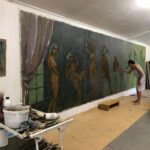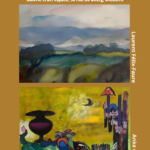DEBORAH MAURICE – “I Love The Blue Of Elsewhere, Of Distance. When I Look At The Blue Mountains Of The Ardèche I Think: In That Land It Must Be…”
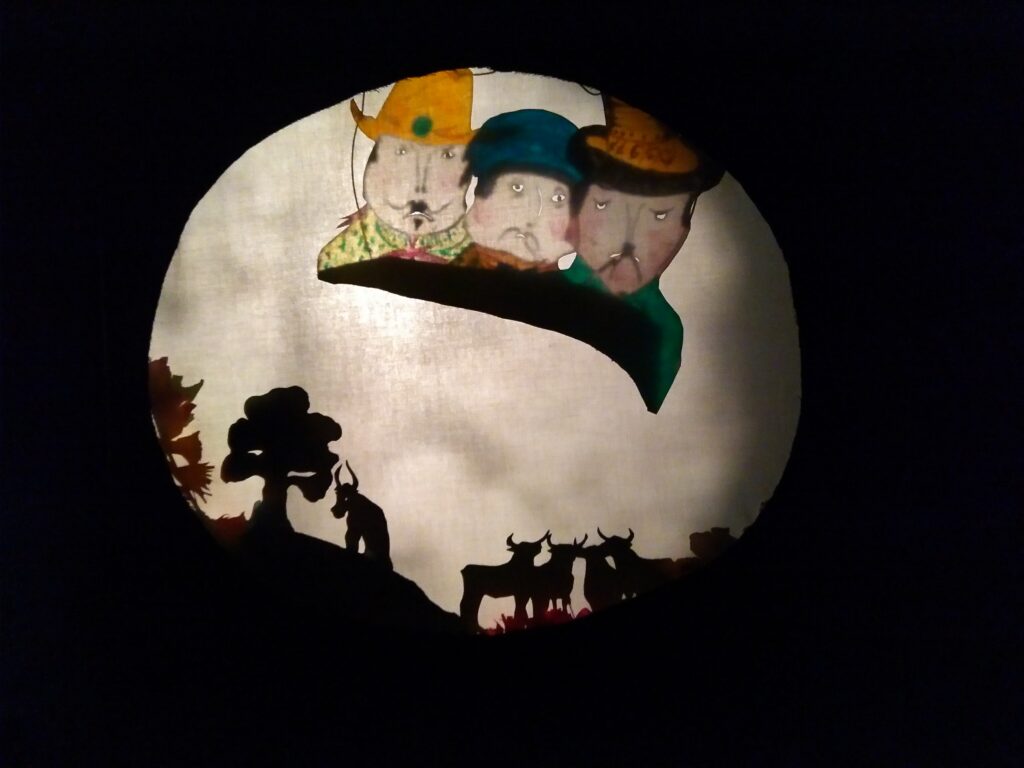
This month’s blog is about puppets and puppeteers. Let me begin with the story of a little unresolved mystery. One day, a few years ago, a truck driver who had previously delivered material to our home, rang at our front door and asked to speak to me. Apparently, he had noticed that we had many books for he asked me whether I could advise him about one he had inherited from a lady to whom he had rendered services. He went back to his car and returned with a thick, old and worn volume in his hands. Could I tell him whether it had any value? To my surprise the pages contained a set of original drawings of a figure the traits of whom seemed familiar. I was intrigued and told the truck driver I had a friend who was a bibliophile and could possibly shed some light on its provenance. To cut a long story short the book was most probably the original manuscript containing illustrations of the famous French glove puppet Guignol who was created in 1808. My friend advised the truck driver to contact the Guignol museum in Lyon and even offered to act as an intermediary. Surprise, excitement passed on the man’s face, and, did I see a fleeting look of mistrust in his eyes when I told him that my friend was prepared to be a go-between? We never saw the truck driver again, and the book, what did he do with it?
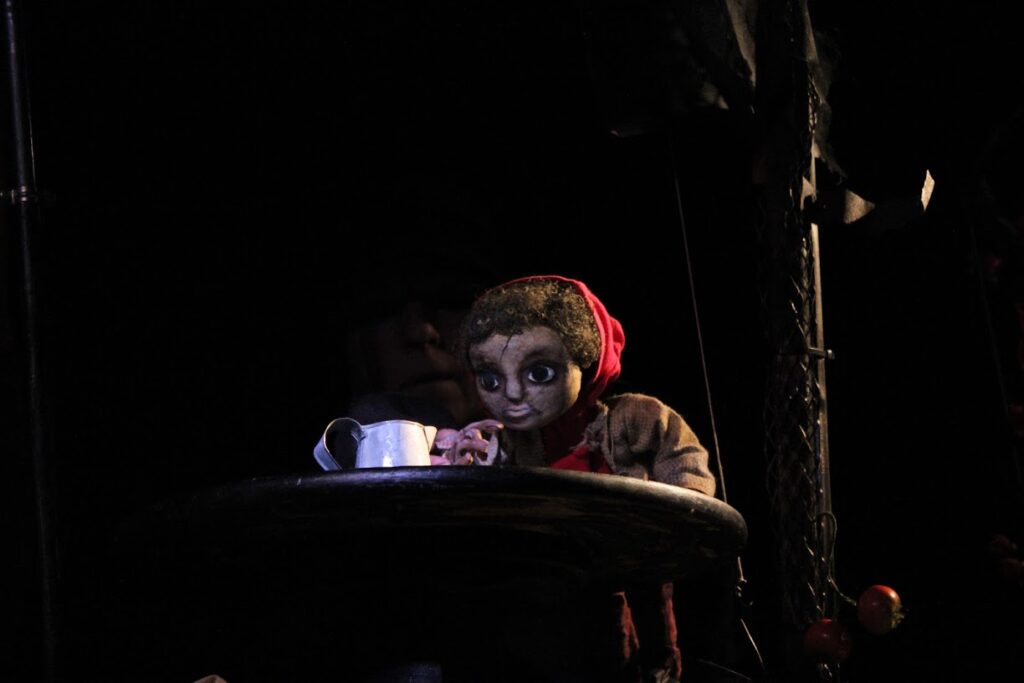
Of course, like everybody else, as a child, I have been to puppet shows. I remember falling under the spell and being completely engrossed by what was happening on stage. I cheered and jeered with the other spectators and called out to the puppets to warn them when they were in danger. Every country has its puppet heroes like Polchinella in Italy, Polichinelle in France along with Guignol, Punch and Judy in England, Jan Klaassen en Katrijn in my other homeland the Netherlands, Petrouchka in Russia, for puppetry has been with us ever since antiquity, in all cultures and societies. They come in many forms and kinds and they are animated by puppeteers in all kinds of ways, with rods, strings, gloves, casting shadows and even by sheathing them on fingers. The puppet theatre I went to in my youth was for entertainment. However, it is also used for more serious purposes. Puppets can be sacred objects or symbolic effigies as well as being a potent and positive way to influence individual and social change. In the wrong hands their power can be toxic as when Hitler encouraged their use as a means to instil the spirit of the Nazi ideal in the minds of his countrymen! The reason for their impact is probably that these “little people” parody our lives and reflect who we are, our actions, our dreams and longings. Speaking for myself, I consider that those who make them and bring them to life are creators of a parallel reality that make them artists in the truest sense of the word. When I heard that a few kilometres from where I live there was a Scottish woman who did just that and at a noteworthy level, I knew I had to ask her for an interview for “Provence Reflections.”
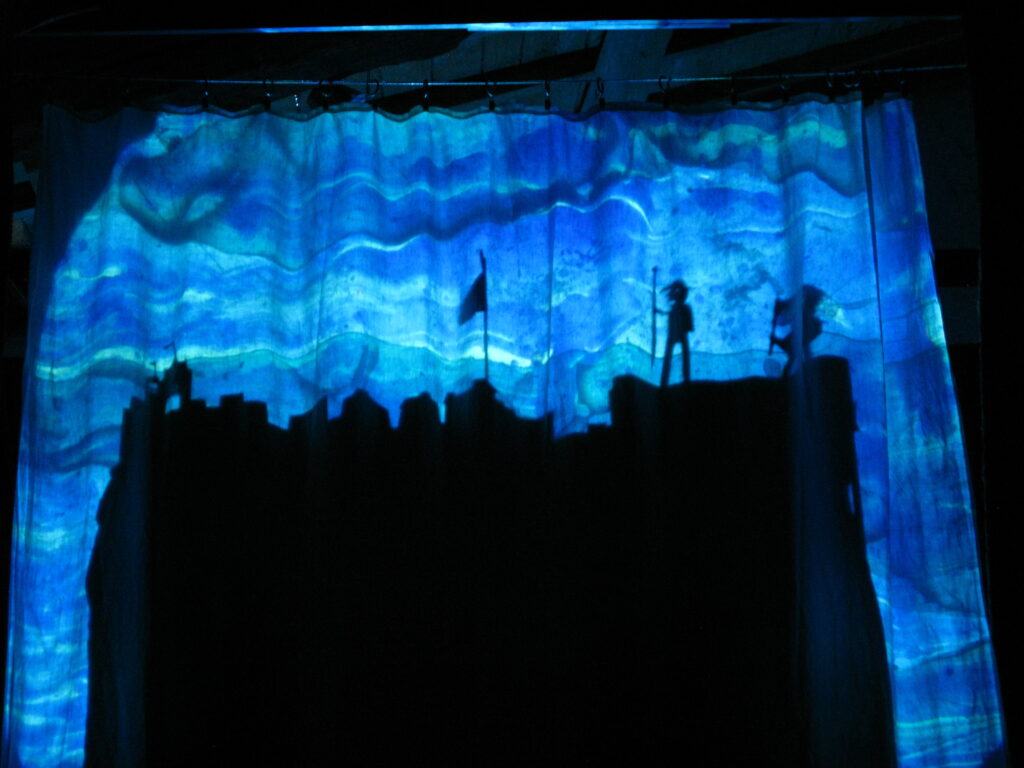
I invited Deborah Maurice (the director of the Samildanach Theatre Company) to our home. My wife Anke and my daughter Karin, who is the editor of this blog, were with me to greet her when she came. After a few words of welcome we quickly got to the crux of the matter. It was evident by the way she spoke that Deborah was fully absorbed in her activities as a puppeteer and also that she is a professional of high standing. At certain moments when describing one of her puppets plays there were flashes of unusual intensity in her eyes as if she were concentrating on the scene unfolding before her. I got the impression of a kind of double vision: she was seeing us as well as the actors she was animating at the same time!
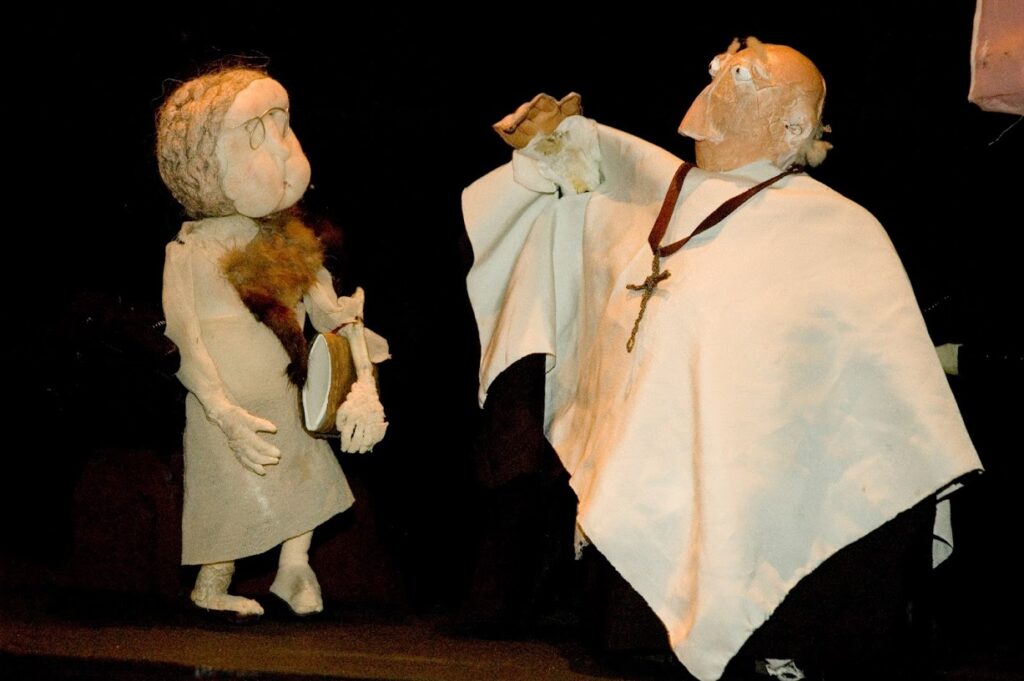
14 years ago, Deborah and her husband moved from the Scottish border to settle in Le Poët Laval where she established the association called Samildanach. As it is quite a singular name, I asked her what it stood for. “It is a Celtic word and there is a story behind our choice. When we first arrived here, we wanted to continue using the name of my English Company, which was: “Collaborators Theatre” but this of course for obvious reasons was impossible in France. It was then I remembered the tale of the character Samildanach who comes to the city gates and the guardian of the city wants to know what he has to offer to the community before being allowed to enter: poetry, woodworking, magic, metal work, music and lots more. It struck me that as puppeteers we need many of these skills and through their mastery puppeteers arrive (hopefully) at the magic and poetry of what we want to express. My first year in the Drôme we were offered an artistic residency at the Fenouillet Theatre at St. Gervais and were in a hurry to register the Company at la Préfecture. Samildanach seemed to me to be as good a name as any, and just as meaningful as most!”
When and where did it all begin? Deborah was born in Scotland but spent most of her youth in a remote place on the West Coast of Cumbria in England. From her home she could see the sea. On clear days, far beyond, the Isle of Man was visible. She dreamed and made up stories about what was happening over there. “I love the blue of elsewhere, of distance. When I look at the blue mountains of the Ardèche I think: in that land it must be…”
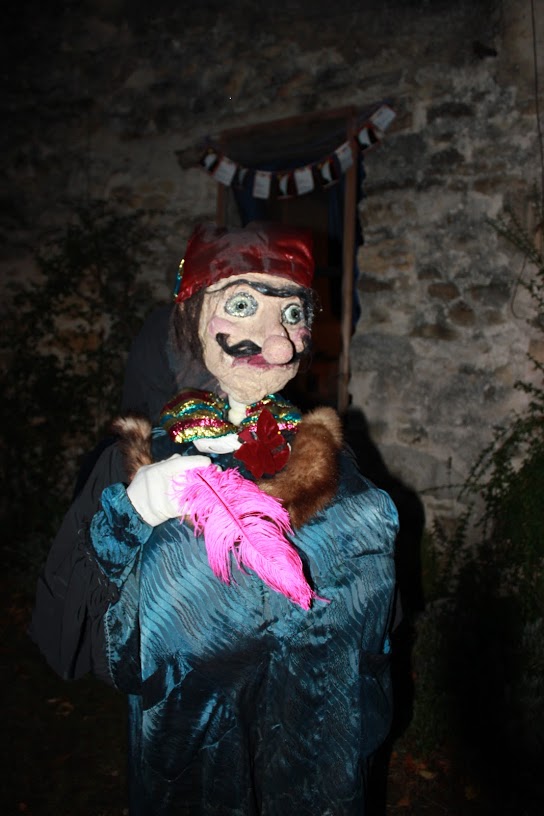
Elsewhere (elsewhere is a recurrent word when Deborah tells about her life!), elsewhere and storytelling, which she loved to do as a child – and still does – is perhaps where the seeds were first sown that would lead her to invent and perform the narratives born in her imagination? “I don’t think I recall ever seeing a puppet show in my childhood but I do remember the circus coming and big, BIG clownish characters on stilts walking around the ring and feeling very afraid of them…hoping against hope that they wouldn’t sit down on top of me …it was so elsewhere…I remain in awe of sawdust and elephants.” A small shadow puppet film project realised during the recent confinement period is actually called “A Touch of Sawdust!” – SEE VIDEOCLIP
The process she followed before becoming a fully-fledged puppeteer was a gradual one. Deborah had had some interesting puppet experiences teaching and using materials to explore women’s stories in deprived areas as well as working with handicapped adults with the aid of puppets as a means of communication. In order to improve her technical skills and extend her know-how she went on to follow a series of short courses with various puppeteers, studied drama at university, acted on stage and wrote a couple of plays for the theatre. “I was lucky to fall on some extraordinary puppetry work,” she says “ and I was very drawn by the material side of puppetry…a block of wood, wire, glue…and the staring out eyes into eternity with audience’s full participation in the suspension of disbelief! They have no ego of their own. There is no place for the actor’s ego when working a puppet. You have to transfer all the energy through the puppet for unless you do confusion arises and the audience literally won’t see the puppet but only the puppeteer behind it. I was also fortunate to be offered a residency with the famous DRAK company in the Czech Republic where I could observe their expert wood carvers and the sheer magic of transformation on the stage by their skilled puppeteers. It was a turning point experience. There is lots of incredibly clever and technically amazing puppetry in the world but what I love most about it is the potential silence of the puppet, the eyes that do not blink and move around but stare forever outwards like the Rajasthani puppets which have been in existence for more than a thousand years in India.”
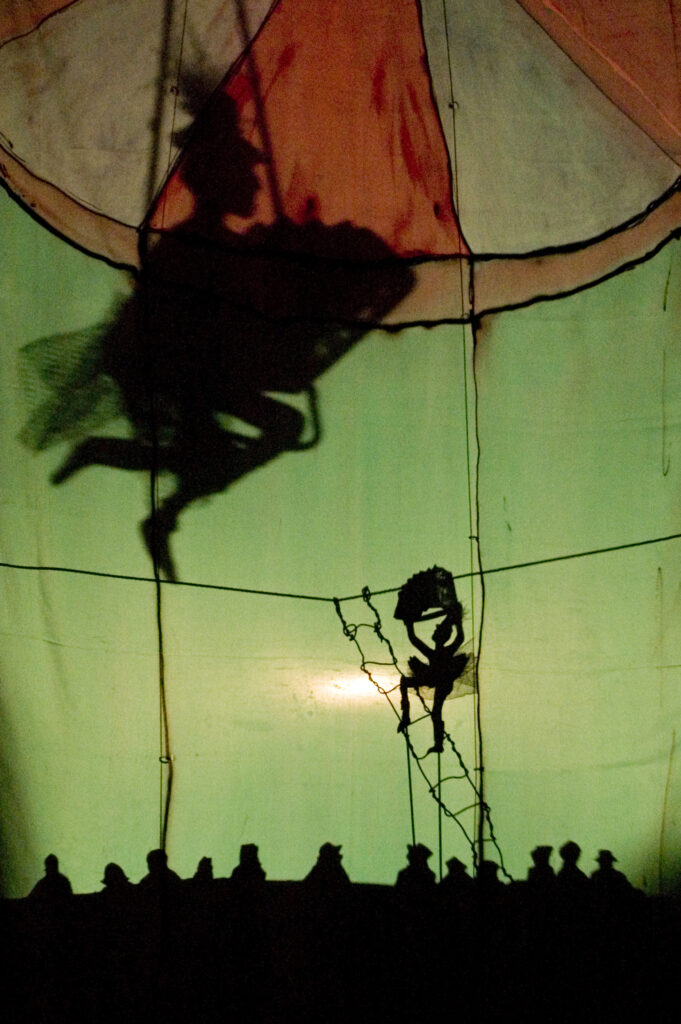
I asked Deborah to tell me something about her approach to puppetry. “I practise in and out of the theatre.” Here again I note how her elsewhere-inclination seems to crop up for she immediately adds that she prefers “non-conventional spaces”. The creative process begins by adapting existing stories or by starting from an idea or even an object. The form is then searched for. Whether shadow theatre, table top theatre, rod or string puppets, with or without text…is a narrator character necessary? … is there a connection with the puppeteers manipulating? “Most of my shows are a combination of table top and shadow theatre. With regard to the latter, shadow theatre is more like painting for me. I am not overly tempted by perfect, flat silhouettes and if I do use them, I mix colours and like to distort shapes using different light sources…torches for example that result in casting moving shapes that suggest ambiances.
Musicians are also involved and we work on “a world of sound” in order to create the right mood and rhythm of the scene. This can be achieved in many ways for instance by rattling hollowed out nut shells to suggest the atmosphere of a wet and dripping prison cell and the loneliness of the prisoner. How it feels when the puppeteer throws the wooden puppet that the audience has grown to love and his head hits the floor in the dripping prison. You hear wood on wood and the audience gasps…; they don’t want him to be hurt! Nothing must out-shine or out-do the puppets, everything is in his service. The imagination of the audience will fill in the missing pieces. This is particularly true of shadow theatre which is two-dimensional. The audience on the other side of the screen literally creates the third dimension.”
Deborah has travelled extensively to many countries around the world. Quite apart from being a form of entertainment, puppeteering is also a visual medium to transmit socio-cultural and moral values. Performances can contribute in helping to solve educational, unemployment, poverty and health problems, etc. “My work in other countries evolved out of many different sources and connections,” she told me “Sometimes they were the result of some mad scheme and at other times a specific project lay behind them. I was invited to the Ecuador job in the Rainforest via a friend in Geneva who was aware of the humanitarian puppetry work I had been involved in in Africa. She herself was involved in the campaign against petrol companies in the Amazonian area. In fact, much of my work abroad has been for humanitarian purposes!”
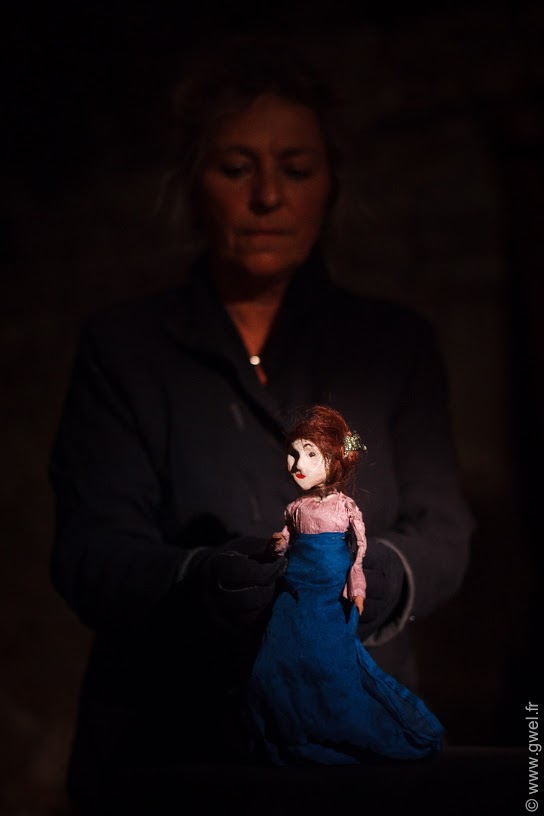 For the last ten years Deborah’s company Samildanach has organised the very successful annual international “Festival des Marionnettes” in Le Poët Laval where she lives. The “11th Festival of Puppetry and Circus” was to take place in April 2020 and was to have been a full fortnight of shows and courses for adults and children. However, due to the Corona virus it has been postponed to the coming month of October. Details will soon follow on her website www.marionnettes-samildanach.com. (It is interesting to note that the Communauté des communes, the Mairie of Le Poët Laval, and the department of the Drôme have funded the projects since 2007 but the company really exists thanks to the support of private individuals, local businesses and ticket sales).
For the last ten years Deborah’s company Samildanach has organised the very successful annual international “Festival des Marionnettes” in Le Poët Laval where she lives. The “11th Festival of Puppetry and Circus” was to take place in April 2020 and was to have been a full fortnight of shows and courses for adults and children. However, due to the Corona virus it has been postponed to the coming month of October. Details will soon follow on her website www.marionnettes-samildanach.com. (It is interesting to note that the Communauté des communes, the Mairie of Le Poët Laval, and the department of the Drôme have funded the projects since 2007 but the company really exists thanks to the support of private individuals, local businesses and ticket sales).
I thoroughly enjoyed discovering the many things I did not know regarding the world of puppetry about which Deborah has been so kind as to share her knowledge and experience with me. Thank you so much Deborah for taking me ELSEWHERE!
Posted in: Art
